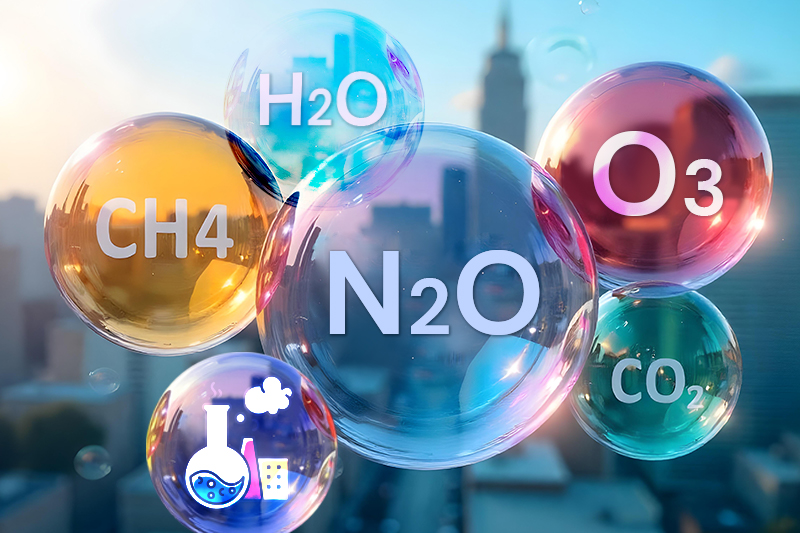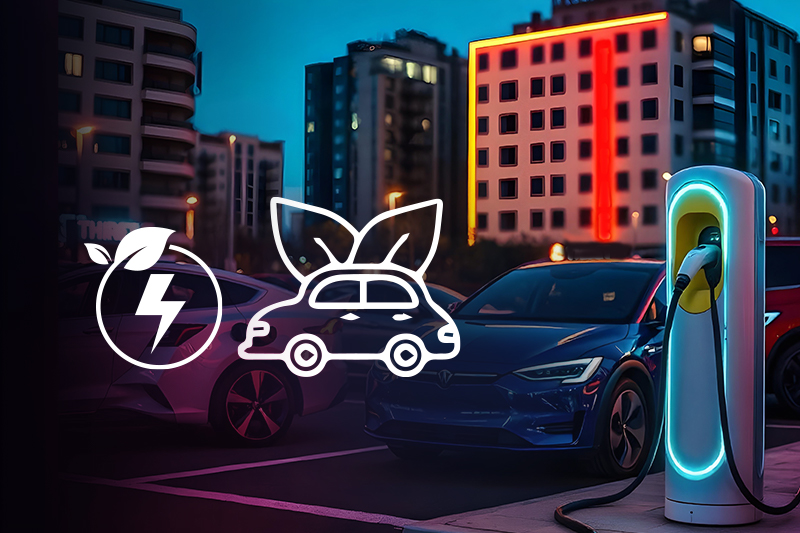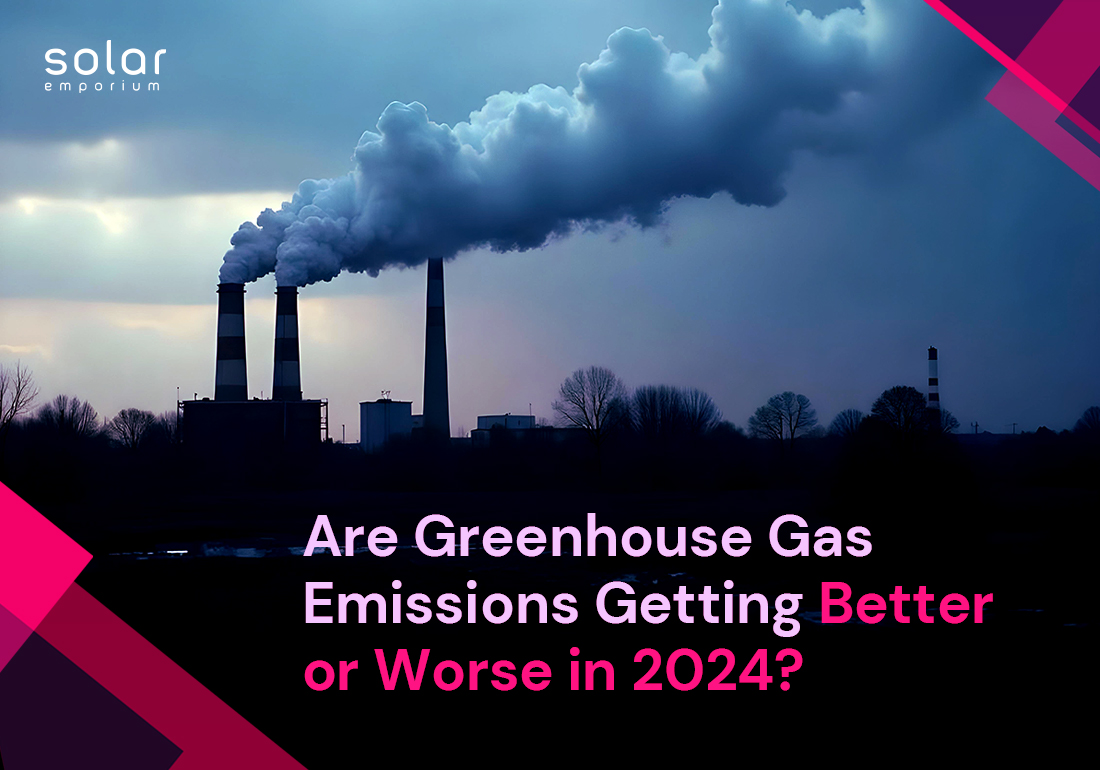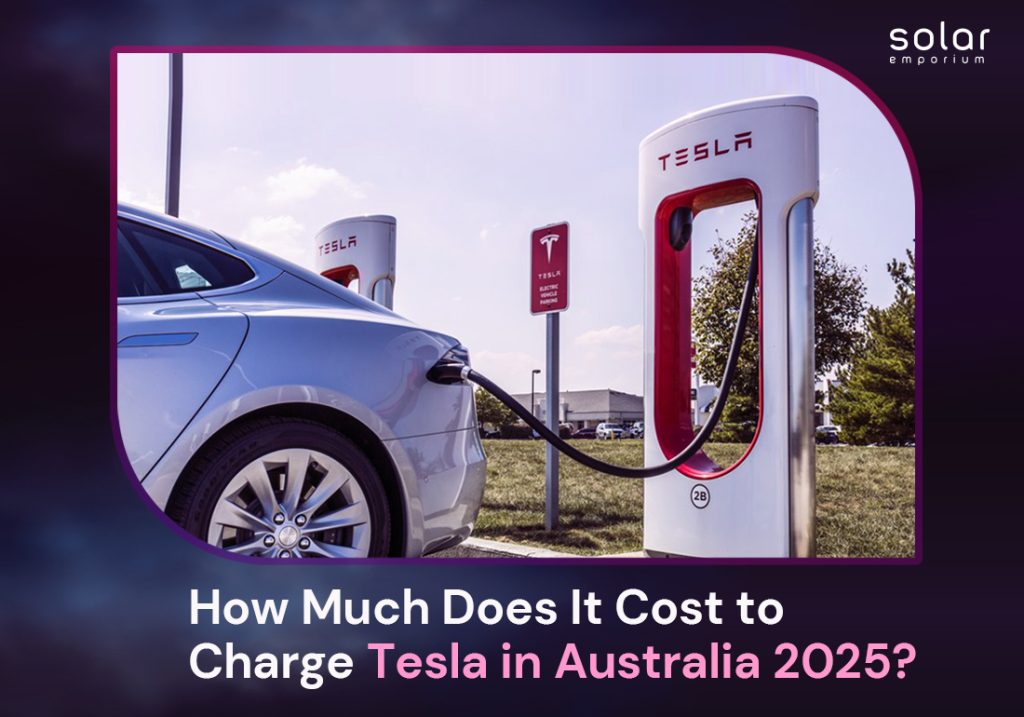As 2024 rolls on, the debate over global greenhouse gas emissions is heating up daily. However, Australia is no different!
With extreme weather events, record-breaking temperatures, and rising concerns over climate change, many Australians wonder: Are greenhouse gas emissions getting better or worse in 2024?
From government policies to residents’ collaborative actions, there’s no shortage of efforts to curb Australia’s carbon footprint. But with the nation’s commitment to reducing emissions and tackling climate change, the question still remains: Is it enough?
While the nation navigates political, economic, and environmental challenges, it’s clear that tackling emissions will require more than just talking. It demands specific action.
Therefore, in this blog, we’ll take a closer look at Australia’s emissions landscape and explore what can be done to ensure a greener, sustainable future.
So, let’s get started!
Greenhouse Gases 101: What They Are and Why We Should Care
Greenhouse gases (GHGs) trap heat inside the earth’s atmosphere. They play a crucial role in the greenhouse effect, which helps regulate the planet’s temperature.
These greenhouse gases allow sunlight to enter the atmosphere but prevent some heat from escaping back into space. This creates a warming effect, keeping the planet’s temperature balanced and preventing life from freezing.
Why Should We Care?
Even though greenhouse gases are crucial to maintaining a balance in the earth’s temperature, excessive concentrations of these gases in the atmosphere can lead to global warming, extreme weather events, ocean acidification, and ecosystem damage.
However, not all gases in the air have the same effect on our planet. Some have severe effects, and some act like a cozy blanket around Earth, keeping us warm and comfortable.
Do you know what gases are considered greenhouse gases? Let’s take a look!
So, from CO2 to Methane, here are the 6 major greenhouse gases you should know about:
- Carbon dioxide (CO2): Carbon dioxide is a primary greenhouse gas produced by burning fossil fuels like coal, oil, and gas. It’s a major contributor to global warming.
- Methane (CH4): Methane is a powerful but short-lived gas released from livestock farming, landfills, and even from oil and gas extraction. It traps heat much more effectively than CO₂.
- Nitrous oxide (N2O): While not as common, nitrous oxide is released from fertilizers, livestock, and industrial activities. It’s potent, even in small amounts.
- Water Vapor (H2O): H20 is the most abundant greenhouse gas. Temperature influences its concentration, and as warmer air can hold more moisture, the greenhouse effect also intensifies.
- Ozone (O3): Although ozone in the upper atmosphere protects us from the Sun’s harmful rays, closer to the ground, it acts as a greenhouse gas, trapping heat.
- Fluorinated gases: These are human-made synthetic gases used in air conditioning, refrigeration, and electronics. They have a very high global warming potential when released into the atmosphere.

The State of Greenhouse Gas Emissions| Are We Making Progress?
In 2023, global carbon dioxide emissions from fossil fuels and industry amounted to 37.01 billion metric tons. Since 1990, global CO2 emissions have grown by over 60%.
Following this trend, global emissions are expected to rise by 1.08 per cent in 2024, reaching a new peak of 37.41 billion metric tons of carbon dioxide.
However, Australia’s National Greenhouse Gas Inventory data shows that the country’s total greenhouse gas emissions until June 2024 were around 440.6 million tons of CO2 equivalent, a 0.7% decrease from the previous year.
This decline was driven mainly by reduced emissions from the energy and transport sectors. Despite a reduction, Australia still lags behind in meeting its renewable energy targets of reducing emissions by 43% by 2030 and achieving net zero by 2050.
This signals the need for more aggressive action in each area to reduce their environmental impact and combat climate change.
Emissions Breakdown: The Key Sectors
In 2024, the primary sectors responsible for Australia’s greenhouse gas emissions are:
- Generating energy mainly for electricity and heat production is responsible for around 33% of total greenhouse gas emissions.
- In Australia, agriculture contributed 16%, largely through methane emissions from livestock and rice production.
- The transport system is another source of greenhouse emissions, accounting for about 18%. The release of carbon, primarily from cars, trucks, and aviation, degrades air quality and causes various respiratory diseases.
- Industrial activities such as producing materials like plastic, cement, and steel can emit 19% of GHGs into the atmosphere, leading to potential environmental hazards.
Greenhouse Gas Emissions in Australia in 2024: Improving, but More Work is Needed
As we head into 2024, greenhouse gas emissions in Australia have seen mixed trends. While some progress has been made in reducing emissions, experts agree that more work is needed to meet national and international climate goals in the coming years.
Residents and the government should expand the use of renewable energy sources and make significant strides in addressing the country’s greenhouse gas emissions.
Besides, the nation can offset its overall emissions trajectory by adopting electric vehicles (EVs), integrating solar panels for powering homes, and following emission reduction policies more profoundly.
Less CO2, More Sustainable Future| The Importance of Emission Reduction
As we head into 2024, greenhouse gas emissions in Australia have seen mixed trends. While some progress has been made in reducing emissions, experts agree that more work is needed to meet national and international climate goals in the coming years.
Residents and the government should expand the use of renewable energy sources and make significant strides in addressing the country’s greenhouse gas emissions.
Besides, the nation can offset its overall emissions trajectory by adopting electric vehicles (EVs), integrating solar panels for powering homes, and following emission reduction policies more profoundly.
Renewable Energy and the Energy Transition
Australia has experienced massive growth in the renewable energy system. Despite its high dependency on fossil fuels, Australia’s renewable energy share has been increasing, with solar and wind being the dominant sources.
As of the Clean Energy Australia 2024’s recent report, electricity generation from renewable sources had already surpassed 30%.
Currently, 39.4 per cent of energy is generated from renewable sources, with solar and wind making up the majority of this share.
Yes, there are several barriers to sustainable energy transitions, but once you start embracing positive habits and focusing on long-term climate goals, you can make a meaningful difference.
Every action counts! Whether small or big, it ultimately contributes to a better future by shaping a green, healthy, livable world for all.
The Role of Electric Vehicles (EVs) and Solar panels
In 2024, the number of electric vehicles on Australian roads has continued to rise. Australia now has more than 100000 EVs in circulation, with a 21% increase in sales.
Similarly, with over 3.4 million rooftop solar installations, Australia has the highest per capita solar panel installation worldwide.
Solar panels help reduce carbon emissions and lower energy costs for households and businesses, contributing to a more sustainable energy future.
Together, EVs and solar panels are key components of Australia’s sustainable energy future, driving progress towards cleaner, greener energy solutions.
Government incentives and rebates on solar panels and EV technologies further accelerate the shift and help to phase out traditional fossil fuel-based power plants and internal combustion engine vehicles.

The Surprising Reasons Behind the Slowdown in Global Emission Growth
In recent years, several countries, including Australia, have achieved economic growth without a proportional increase in emissions.
This trend is largely due to advancements in energy efficiency and renewable energy storage.
Technologies reduce energy use in production and transportation, while policies like carbon taxes, feed-in tariffs, and battery storage incentives promote clean tech and slow global emissions growth.
However, the global economy is still highly reliant on fossil fuels, especially in developing countries.
So, keep in mind the emissions will continue to rise until a widespread transition to cleaner energy is achieved.
Top Challenges Facing Emission Reductions and How to Overcome Them
Despite advancements in renewable energy and electric vehicles, Australia faces significant challenges in reducing greenhouse gas emissions:
Political and Policy Barriers
While some governments have prioritized emissions reductions in Australia, others have been more reluctant to invest in the fossil fuel industry due to economic interests. This policy inconsistency hinders long-term efforts to reduce emissions.
Solution
Australia needs even political support for climate policies, including carbon pricing, incentives for clean energy, and eliminating fossil fuel subsidies.
Infrastructure Limitations
The transition to renewable energy and electric vehicles requires substantial infrastructural investment. Expanding the electricity grid and upgrading the transport infrastructure requires high upfront costs and time.
Solution
Increased government spending on clean energy infrastructure and collaborative public-private partnerships can accelerate this renewable energy transition.
Agricultural Emissions
Greenhouse gas emissions like methane from agriculture, particularly livestock, remain a significant challenge.
Solution
Reducing emissions requires changes in farming practices and new innovative technologies. Government incentives for sustainable agriculture farming practices and technological innovations in the agriculture sector can significantly reduce emissions.
Technological Solutions and Innovations
While reducing emissions requires policy and behavioral changes, technological innovations will be crucial in achieving net-zero goals.
1. Carbon Capture and Storage (CCS)
Carbon capture and storage (CCS) technology captures CO2 emissions at the source and stores them underground.
While still in its early stages, Australia is investing in CCS as a potential solution to decrease carbon dioxide emissions from industries like cement and steel.
2. Green Hydrogen
Green hydrogen is produced using renewable energy to split water into hydrogen and oxygen. Australia has great potential to lead in green hydrogen production and export it globally. This could revolutionize decarbonizing industries and transport.
3. Energy Efficiency Technologies
Energy efficiency technologies in homes, factories, and businesses can significantly reduce emissions.
These technologies, from smart grids and energy-efficient appliances to industrial-scale energy-saving solutions, help minimize energy consumption while maintaining productivity.

Parting Thoughts
With continued technological innovation and greater political commitment, Australia can play a crucial role in the global fight against climate change in 2024.
So, the question isn’t just whether greenhouse gas emissions are improving—it’s whether we can do enough to safeguard our planet’s future.
Let’s work together, embrace innovation, and push for stronger climate policies that will help us meet our targets and reduce emissions for future generations. The time to act is now!
At Solar Emporium, we offer practical solutions to help you achieve your energy goals. Contact us today, and remember to get your free solar quote!







